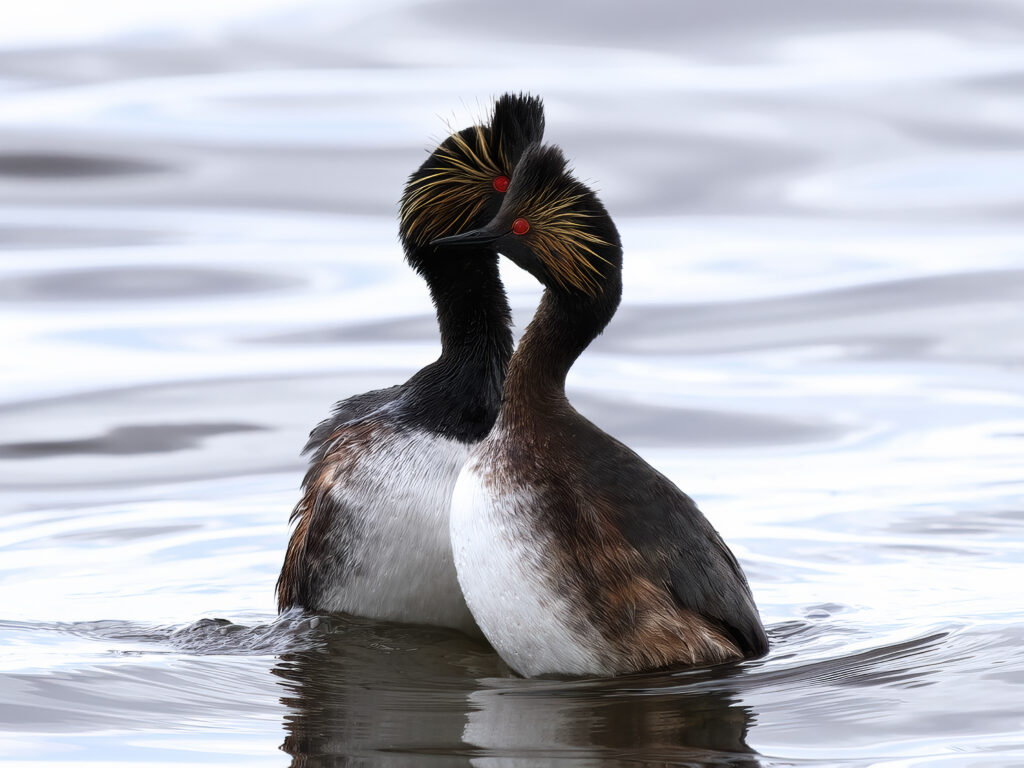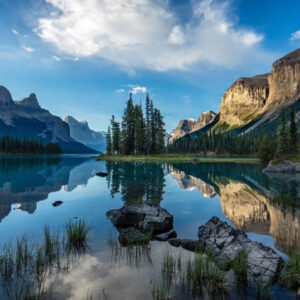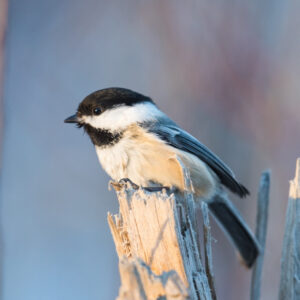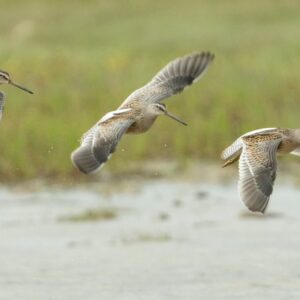The Town of Devon (AL), in consultation with Devon Nature Club, decided to build a stormwater pond in our industrial area about five years ago. This is the first “wet” stormwater pond (that is, one that holds water all the time) built by the town. We noted last year that a pair of eared grebes, also known as black-necked grebes, has moved in.
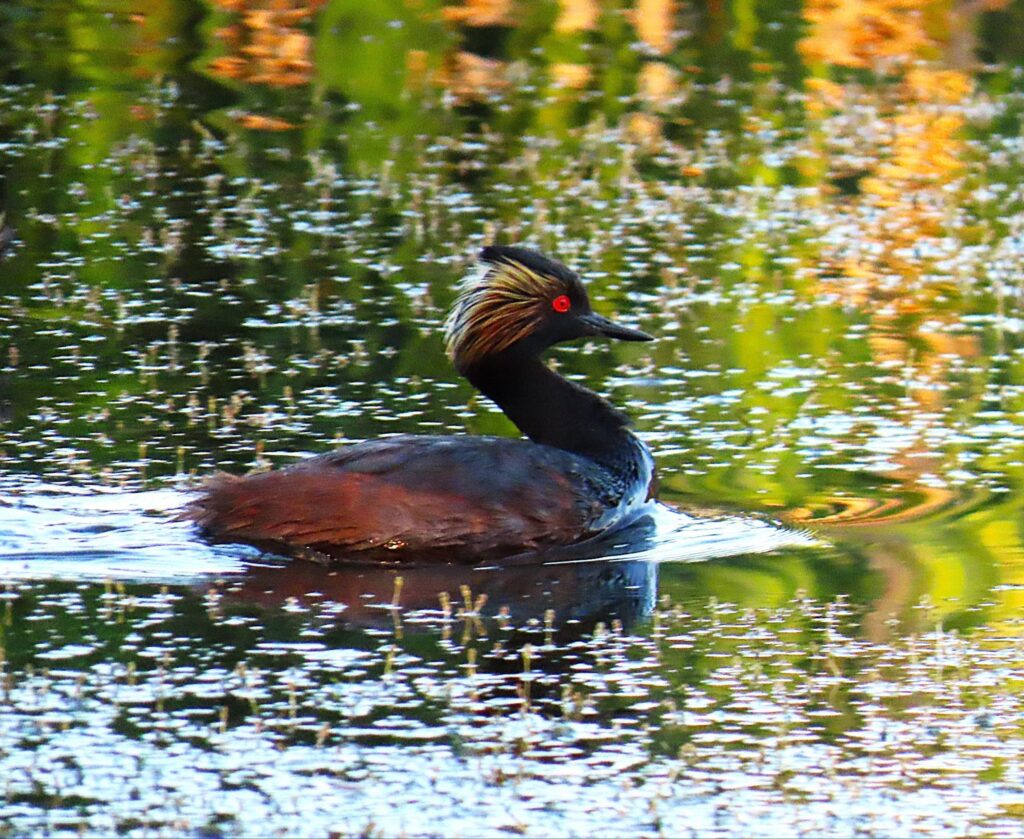
Eared Grebe. Photo: Darlene Landino
They don’t seem to be bothered by the people and machines nearby. In 2024, they reared three chicks, and we hope they will be able to do the same this year (as I write this blog, the female is incubating eggs). Quite a few articles on them say they nest in colonies, but we have only seen one pair here so far. When we are working nearby planting trees, they come close to check us out. They eat insect larvae and other small crustaceans like shrimp in the water. I don’t believe there are any fish in the pond. The pond level stays about the same all the time.
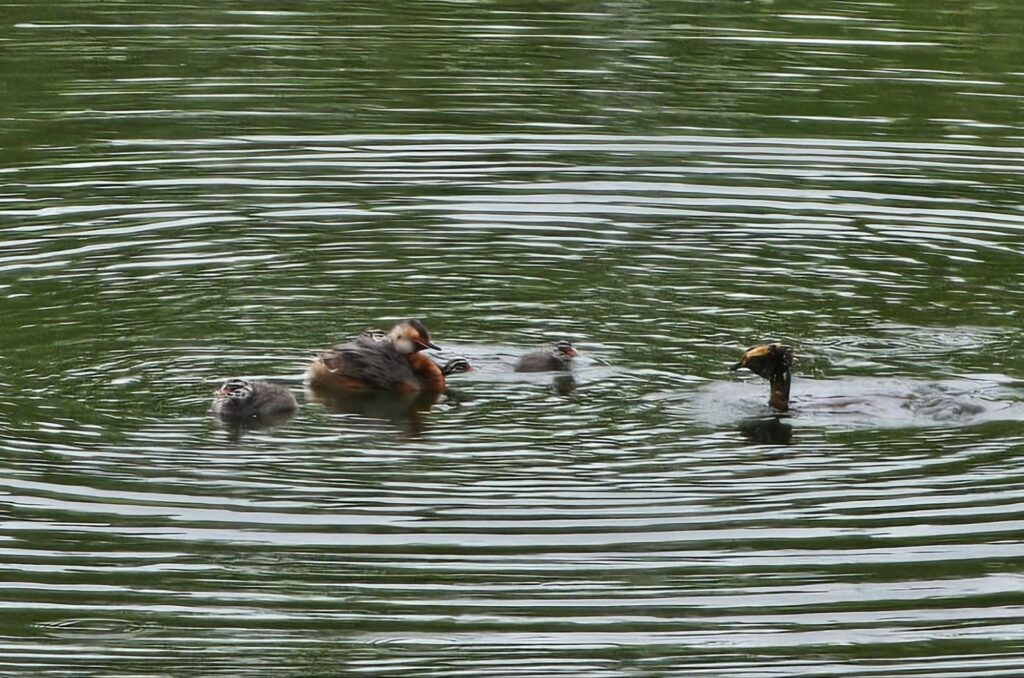
Eared grebe family of 2024 at the Devon stormwater pond. Photo: Allan Macaulay
These grebes built a floating nest that is attached to stable vegetation. When I was a boy, I would see grebes’ nests floating in the water, and the eggs seemed to be touching water too. I was always amazed that they could incubate them successfully when touching the water like that. The young often ride on the backs of the parents in the early stages. Both parents are involved in rearing the young. I believe all grebes are similar in that regard. The males of many other ducks only fertilize the eggs and then leave the family to develop without them.
Populations of Canada’s most endangered species have declined by more than 50 percent over the last 50 years. Add your voice for nature now by sending a personal letter to the Prime Minister, Environment Minister, Oceans Minister, and your local MP. Help protect birds and other wildlife!
We also see a few pairs of redwing blackbirds around the pond, and since my grandson and I put up about 12 birdhouses, we now have a few pairs of tree swallows moving in. There was a barn swallow flying over the water the other day, but I’m not sure where he is nesting.
A pair of Canada geese have tried to set up, but something must have gotten their eggs. The gander was alone for a while but now they are together again — not a good sign. The same thing happened last year. There are a lot of off-leash dogs around, as well as wildlife like crows and coyotes, so that could explain what happened to the eggs. The crows have a nest in the poplars that we see from the pond.
I did see a muskrat a few days ago and mallards stopped by too. There is a creek nearby used by a variety of creatures, and of course the wood frogs have moved into the pond.
Thanks to Devon Parks for putting in posts for bird houses and marking a buffer around the pond to mark a no-spray and no-mowing zone. The longer vegetation will be great for ground-nesting birds and other creatures. Parks is also talking about working with us to put up a martin house and a nesting island in the pond.
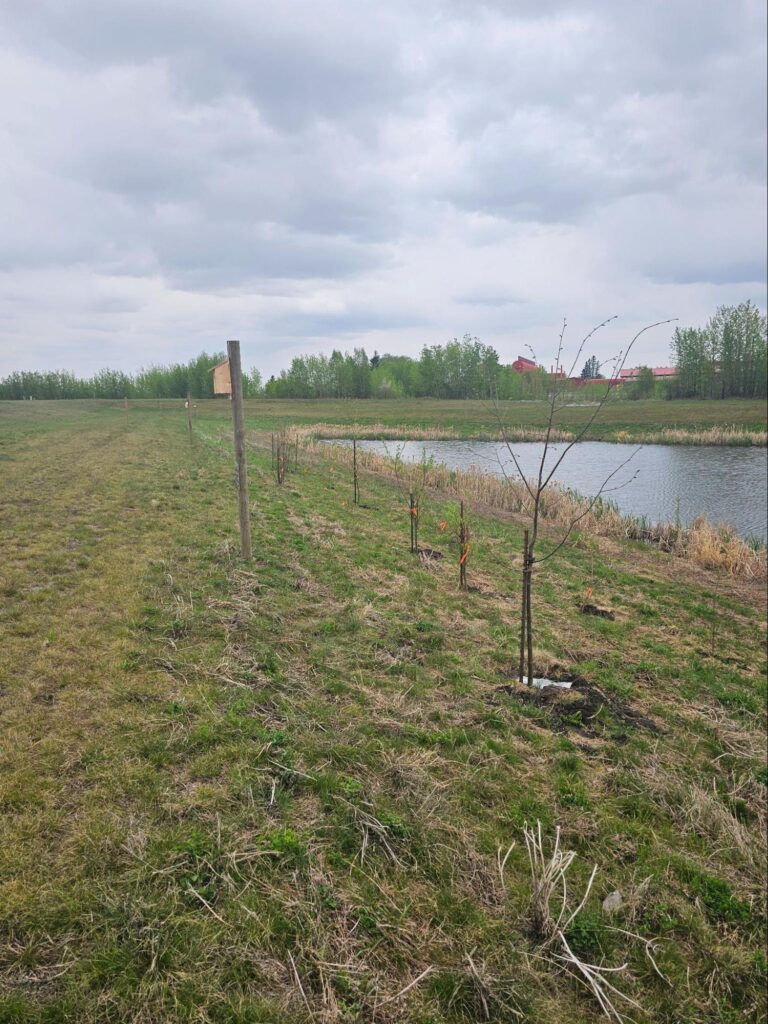
Volunteers from the Devon Nature Club planted and watered forty trees and shrubs around the stormwater pond. Visible also are the birdhouse posts put in by the town of Devon. (Photo: Allan Macaulay)
Some of the native trees and shrubs we have planted so far include white spruce, aspen and balsam poplar, red osier dogwood, native willows (two species), paper birch, alder, wild rose, raspberries, and saskatoon berries. Most of these trees and shrubs have seeded naturally in my garden and were nurtured to be planted in our green spaces. Our lead hand for the Town of Devon, Parks’ Shawn O’Neil, has been very supportive of this project and supplied some of the materials and protection for the area. We are hoping to have this area included in the protection of our green spaces with the new Devon Parks and Open Spaces bylaw presently being finalized by the town.
When we work together, we can accomplish so much.
Want to help Canadian species like the eared grebe and more? Stay tuned with the latest in Canadian nature by subscribing for email updates. You’ll receive regular updates about what we’re doing to protect Canadian nature and how you can help.
